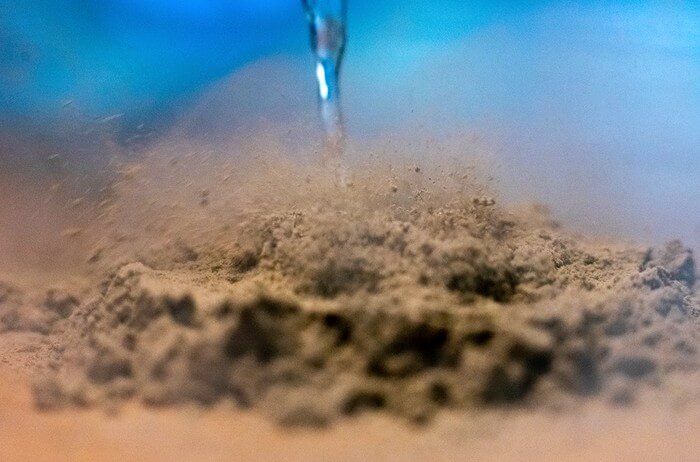Researchers at Washington State University have developed a liquid nitrogen spray that can remove nearly all simulated moon dust from spacesuits.
The advancement has the potential to solve a major problem facing future moon-landing astronauts. Moon dust, which sticks to everything it touches due to its electrostatic charge, is composed of fine particles that are as abrasive as ground fiberglass. During the Apollo missions in the 1960s and early 1970s, astronauts used brushes to remove moon dust from their suits, but this proved ineffective and caused damage to the spacesuits. The abrasive and tiny particles can also damage engines and electronics, and prolonged exposure to the dust can lead to lung damage.
“Moon dust is electrostatically charged, abrasive and gets everywhere, making it a very difficult substance to deal with,” said Ian Wells, first author on the paper and a senior in WSU’s School of Mechanical and Materials Engineering. “You end up with a fine layer of dust as a minimum just covering everything…. It posed a lot of problems that affected the missions as well as the astronauts once they returned home.”
The researchers demonstrated their technology in the journal Acta Astronautica, reporting that the spray removed over 98% of the simulated moon dust in a vacuum environment with minimal damage to spacesuits. This performance surpasses that of previous techniques. The team used the Leidenfrost Effect, which can be observed when cold water is poured onto a hot frying pan and beads up and moves across the surface. By spraying the very cold liquid nitrogen at warmer dust-covered material, the dust particles bead up and float away on the nitrogen vapor.
While a brush caused damage to the spacesuit material after just one brushing, the liquid nitrogen spray took 75 cycles before any damage occurred. The researchers are now working to fully understand and model the interactions between the dust particles and liquid nitrogen. They are also seeking funding to further test the technology in conditions that more closely approximate outer space, such as in lunar gravity. NASA’s Artemis mission aims to land the first woman and person of color on the moon in 2025 and set up a base camp for further exploration, so finding a solution to the moon dust problem is of great importance.


